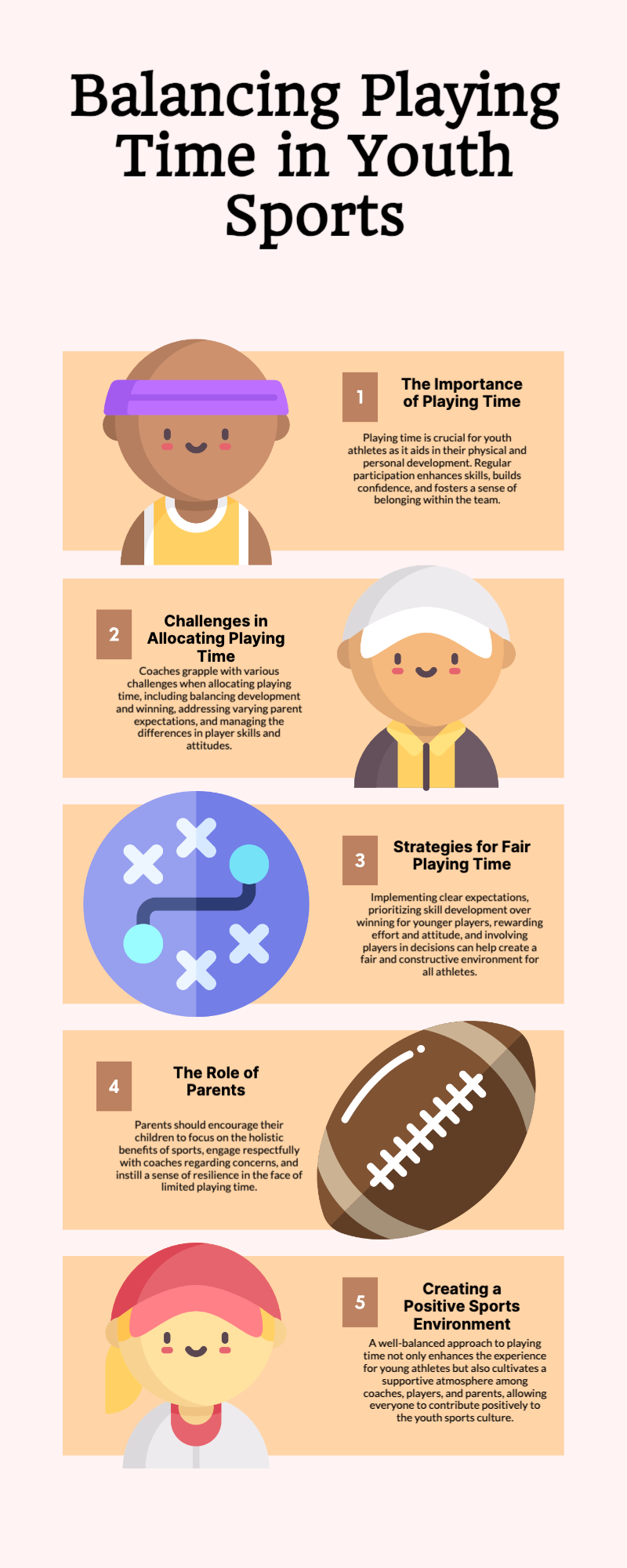Get our exclusive report. Download the iSport360 Club Switching Report Here – For Club Admins, Rec Leaders and Coaches.
Balancing Playing Time in Youth Sports
Youth sports offer a unique opportunity for children to develop physical skills, learn teamwork, and build character. However, one topic that often sparks debate is how playing time is distributed among team members. Striking the right balance between fairness, development, and competition is crucial to ensuring a positive experience for all involved.
The Importance of Playing Time
Playing time is more than just minutes on the field or court; it’s a vital part of a child’s athletic and personal development. Consistent participation allows players to:
- Build Skills: Practice is essential, but game situations provide a different level of learning, including decision-making under pressure.
- Gain Confidence: Regular opportunities to play help young athletes feel valued and capable.
- Foster Team Connection: Being part of the action strengthens a child’s sense of belonging and commitment to the team.
Challenges in Allocating Playing Time
Coaches often face competing pressures when deciding how to distribute playing time. Some of the key challenges include:
- Balancing Development and Winning: Competitive leagues may emphasize results, making it tempting to prioritize top performers.
- Parent Expectations: Parents may have differing views on what constitutes fair playing time, adding pressure on coaches.
- Player Differences: Athletes vary in skill, effort, and attitude, which can influence their time on the field.
Strategies for Fair and Effective Playing Time
- Set Clear Expectations: At the start of the season, communicate the team’s philosophy regarding playing time. Whether the focus is on equal participation or performance-based allocation, clarity helps manage expectations.
- Prioritize Development in Younger Leagues: For younger age groups, prioritize skill development and equal participation over winning. This approach keeps children engaged and fosters long-term interest in sports.
- Reward Effort and Attitude: While skill levels vary, effort and attitude are within every player’s control. Recognizing and rewarding these qualities encourages a positive team culture.
- Rotate Positions: Allowing players to experience different roles not only increases their understanding of the game but also ensures that everyone gets meaningful opportunities to contribute.
- Involve Players in the Process: Older athletes can be included in discussions about playing time, helping them understand the coach’s decisions and promoting accountability.
The Role of Parents
Parents play a critical role in supporting a healthy approach to playing time. Here’s how they can contribute:
- Focus on the Bigger Picture: Emphasize effort, learning, and enjoyment over winning or individual accolades.
- Communicate Respectfully: If concerns about playing time arise, approach coaches respectfully and seek to understand their perspective.
- Encourage Resilience: Use limited playing time as an opportunity to teach perseverance and the value of hard work.
Conclusion
Playing time in youth sports is a complex issue, but when approached thoughtfully, it can enhance the experience for all participants. By prioritizing development, fostering communication, and promoting fairness, coaches, parents, and players can work together to create an environment where every child has the chance to grow, contribute, and enjoy the game.
iSport360 is the only app that does it all for youth sports. For more information on what we do, click here.
About the author:
Amy Masters is a sports mom, coach, and club administrator. She has been coaching youth sports for more than 10 years. She started Jr Lions Field Hockey, the youth recreation program for the Hunterdon County community growing it from 40 players in year 1 to 150 players by year 3. A few years later, she saw the love and competitiveness grow then started Omega Field Hockey Club serving NJ and PA players. Before coaching, she was a collegiate field hockey player for Lock Haven University. In her spare time (lol), she is head of marketing for iSport360 and the co-editor of the Youth Sports Survival Guide. The Youth Sports Survival Guide is the largest youth sports newsletter in the world.
Learn more or request a demo of our youth sports software that is helping teams improve communication, organization and player development.
March 8, 2025






